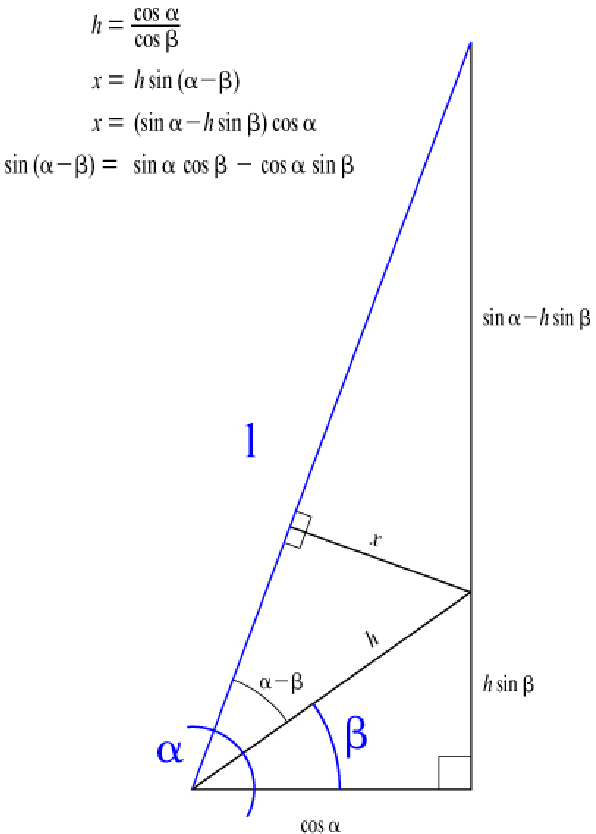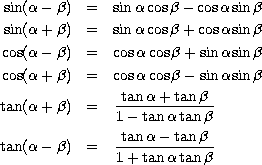compound-angle
1 Compound Angle Formulae
1.1 Learning Objectives
Knowledge and use of formulae for sinA ± B,cosA ± B,tanA ± B; double angle
formulae for
sin2 ,cos2
,cos2 ,tan2
,tan2 .
.
Solution of equations, eg 3sin2 = cos
= cos and cosxsin + sinxcos = 0.2, etc. General solutions will not be expected. Solutions may be required in degrees or radians.
1.2 Compound Angles
There are two basic methods to prove these formulae. One is by using complex numbers and we have not yet covered those in this course. It also involves a certain amount of algebraic manipulation, so instead we examine the following short geometric proof in the figure. This proof is valid for small angles only, but illustrates the equation well.

| Figure 1: | Diagram by DeborahSmiley of Ivyworks
---|---
The proof of the subtraction formula for cos can be developed by making the
opposite length 1 and the other of the two possible angles  .
Then the addition formulae are derived by allowing -
.
Then the addition formulae are derived by allowing - in
place of
in
place of  and using the evenness/oddness of the functions.
Finally, tan formulae are found by combining and rearranging sin and cos. To
summarise:
and using the evenness/oddness of the functions.
Finally, tan formulae are found by combining and rearranging sin and cos. To
summarise:

1.3 Double Angles
It is a simple matter of letting  =
=  =
=
 in the addition formulae to obtain:
in the addition formulae to obtain:

1.4 Solving Equations
Worked examples. First one:

Fire up a calculator:
octave:1> asin(1/6)
ans = 0.16745
This answer is in radians.
Second one:

Fire up the calculator:
octave:4> asin(0.2)
ans = 0.20136
octave:5> asin(0.2)+(pi/3)
ans = 1.2486
So:
